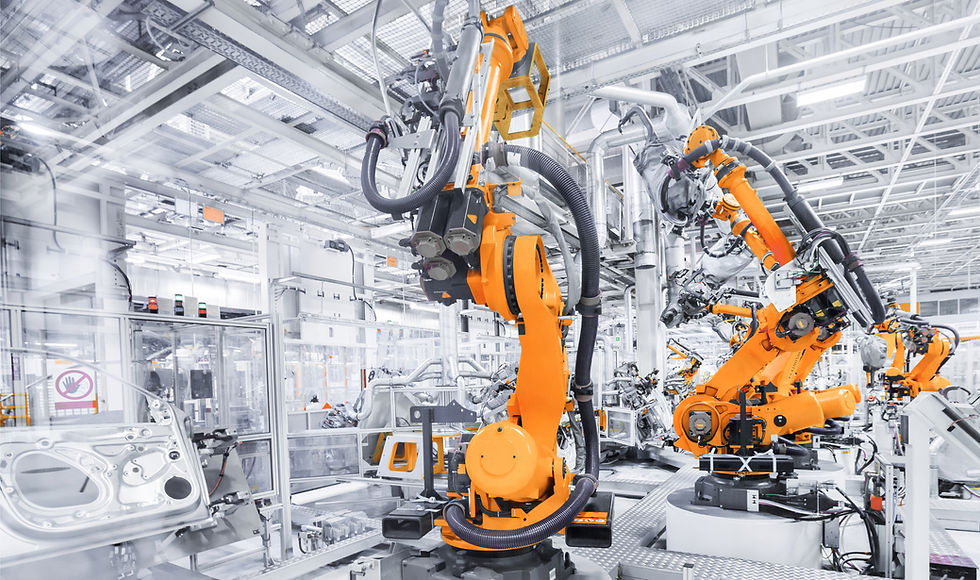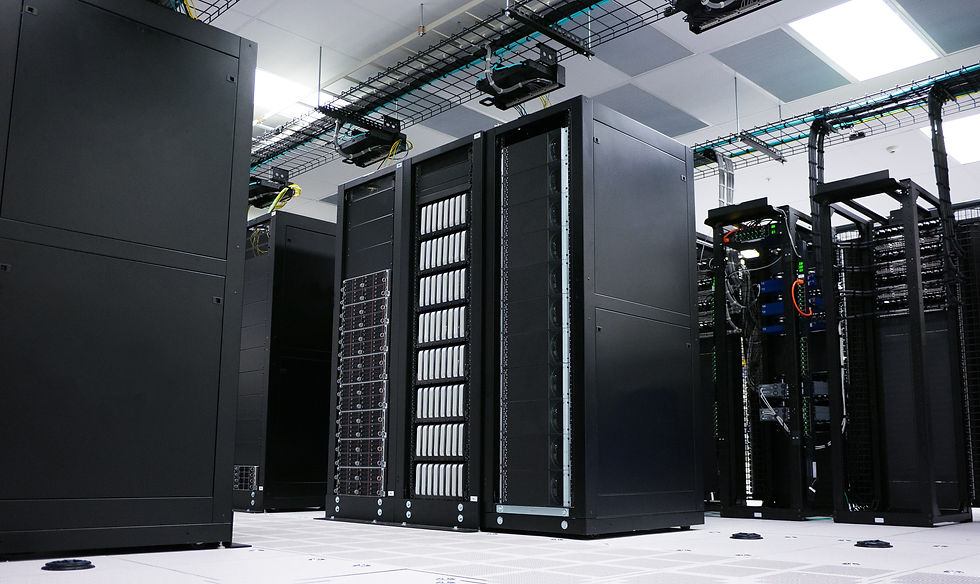We have CTOs and CIOs - who needs the CDO?
- David Garceran Nieuwenburg

- Jan 17, 2023
- 4 min read
Last things first.
Go back 75 years -and more- and technology was predominantly about processing raw materials and manufacturing products. A typical corporate role in the primary, and more so in the secondary sectors would be that of a CTO, the person accountable for production lines running smoothly and efficiently. Technology being an enabler and potential differentiator, the CTO would be outward looking for better technologies, driving technical innovation to support increased output which in turn helps drive revenue. The CTO dared to challenge the status quo, eyeing market opportunities based on technological advancements.

Robotic arms on a car manufacturing plant
Go back 50 years -and less- and we can see that the use of technology branched out to also support the tertiary sector, a sector heavily information-dependent for its activities and services, inter- and intra-company as well as B2C. Born is the Information Technology domain with software driven IT, and the typical CIO role to manage this field. The CIO would be more inward looking, trying to identify opportunities for better information flow, with tech solutions in that space (networks, applications), but also through improving business processes or otherwise, like through people.
As the volume of information flow within and between sectors, including the government, kept on growing in line with continuously increased economic activity, and amplified by ubiquitous internet infrastructure, the speres of in fluence of the CTO and CIO started to overlap in the IT space.

Computing power is at the heart of the takeoff of Information Technology
Now go back only 25 years and we see that the core units of information, data, start to move to the foreground of attention. By storing, combining, sharing, and analyzing data, the more the better (Big Data) an entire new layer of insights can be derived with machine learning algorithms and predictive and prescriptive models crunching out findings. These can be looped back into product development or used for targeted personalized customer offerings – whether you want it or not, your Google search results on the same keyword will not be the same as someone else's, nor are the recommended Netflix movies or suggested connections on LinkedIn.
This knowledge industry, the quaternary sector if you wish, with telco companies, social media companies, internet providers, cloud platform providers, data science and machine learning activities and blockchain as part of it, requires an additional perspective to the strictly technical, infrastructural or information-related one, namely the management and governance of data itself: we talk data attributes and data definitions at field level, data dictionaries, glossaries, data quality, meta-data management, data ownership, 3rd party data treatment and data exchange conventions and so forth.
Thus comes the CDO role in play.

Data users would not care what tech systems are behind the data they use: they are at the mercy of the data quality itself, data field level.
The CDO role differs from the CTO and CIO in several ways. The CDO is the new kid on the block, data centric. Many a company has appointed a CDO in the last 10 years to tick the box of data centricity and -drivenness, hot topics, after all, 'data is the new oil'. Yet, there is often no clear job description for the CDO and if something would be in it, wasn't that what used to be done by a CIO? A strong claim, if you include a side job or a point on the org chart as full accountability.
The CDO is the least hardcore-tech by action, not necessarily by knowledge, but the CDO is not so much passionate about latest models, versions and features of 'tech boxes'; instead, the CDO's perspectives come from shouldering the responsibility to secure no "garbage-in". The CDO endeavors to translate business needs into data requirements and based off that, only then, starts paying attention to a tech solution, the tech boxes to fill, store and move around the data. The CDO gladly let CTO and CIO handle that - but on CDO data specs.
It seems a very natural and easy job for the CDO, particularly in the services sector, after all, business doesn't need the info tech per se, they need what this tech does, what it enables: data moving from one place to another for business decision making or other business actions.
Unfortunately, deeply embedded and established in old ways and structures, CTOs and CIOs are running the IT realm, often on automatic pilot. They are naturally positioned to overlook the CDO's step in its entirety by going straight to a tech solution. A company can get away with this approach because tech implementations are notorious for their delays, de/rescoping, budget overrun and even in production, bugs are an accepted part of an IT solution. If things go wrong, that's expected. Rewrite some code, update hardware version, create some middleware, and off you go.
This does not apply when things go wrong with data: regulators and customers will not accept a wrong name or dollar amount to appear on your bank account, and internally, with low quality, let alone wrong data, product development and customer service are at risk to do more harm than good.
And things will go wrong if the data foundation is not hard-wired, upfront before tech solutioning. Various issues may arise around transparency, quality and governance: where is the data, who owns it, where is it used, who can use it under which conditions, who gave the definitions and are they unique and not outdated, what are the (business and security) requirements for copying, combining datasets or infusing with 3rd party data, handling of privacy and other sensitivities as well as fulfilling regulatory requirements and timely reaction to changes thereof? The list can go on and on.
An IT solution will turn into an asset if such above technical-agnostic dimensions are mapped out rigorously and comprehensively. A data centric or data driven company is where data engineers, who ETL data, data scientists, who build models and algorithms, data users, who create dashboards or other visualizations, have transparently and with accountability access to data that is timely, accurate, unique, complete and in line with regulatory requirements. It is the least of the CDOs worries which tech boxes are used to fulfill this.
And that is where the CDO stand apart from the CTO and/or CIO, who are justly so to be entrusted to thrive in the established paradigm of system availability, down time, platform and network performance, maintenance, licensing, scalability, security, and other such parameters. But the data going into and residing in this tech ecosystem requires upfront plumbing and continuing governance.
First things first.
Commentaires